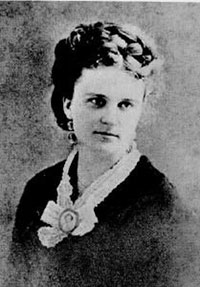When one thinks of great feminist short stories, it is certainly not the American South in the 1800s that comes to mind. However, Kate Chopin, one of the great American writers who

lived and wrote in the South during the late 1800s, is the writer of one of the most easily recognized short stories in the world. “The Story of an Hour” has a blatant feminist slant, presents all the components of a typical short story in a non-complicated manner and, moreover, is a very entertaining read, and these are perhaps the reasons why the story is used in so many universities around the world, particularly in classes introducing students to feminist literature or the short story form.
Mrs. Mallard, our protagonist, afflicted with heart trouble, opens the story when we learn that her husband has died in a tragic accident. As one would expect, Mrs. Mallard bursts into tears and begins to mourn her husband’s passing, but then the story takes its first interesting turn when our housewife-in-grief sits near to the window of her bedroom and looks out at the world in front of her. Chopin uses lush, sumptuous, beautiful, beckoning imagery to describe the setting. Looking out of the window Mrs. Mallard saw “…the tops of trees that were all aquiver with the new spring life”, “the delicious breath of rain” that was “in the air”, “patches of blue sky” showing between the clouds. The images manage to remind Mrs. Mallard of the beauty still existing in the world despite the presence of death and, therefore, it is not surprising that right after observing the activities outside of her window, the widowed woman realizes that she is free – and she even shouts it out for herself: “Free!” – from both her husband and presumably repressive marriage.
The act of a woman celebrating, and rejoicing, in the death of her husband would be a scandalous thing today and it was probably even more so during the time when the story was written. Chopin does not present any actual evidence to show how our protagonist was being repressed in her marriage. We have no evidence that Mrs. Mallard’s husband was abusive or controlling and yet, we know that the marriage was not a good one, and was in fact one that Mrs. Mallard longed to be free from because of the way the woman begins to react to her husband’s death, the way she experiences a great, ironic (one of many examples of irony in the story), “monstrous joy” upon realizing that her husband’s death has freed her.
A woman’s notion of freedom, when being trapped means being confined to an unhappy marriage, may seem like a trivial thing to those who are not inclined to the feminist ideology. However, if there is one thing that “The Story of an Hour” does right is the way in which it shows how much a woman’s independence and freedom means to her. Mrs. Mallard’s immediate plans for her future life, her wish for life to be long as compared to herself wishing for a short life when her husband was alive, and the thought of having her days and life as her own are all expressions of bountiful joy that ultimately cancel the grief and sorrow that is expected to be apparent when one’s husband dies.
However, all of this comes to a sharp end in the climax of the story when Chopin writes her final twist and brings all of Mrs. Mallard’s hopes and dreams and indeed, Mrs. Mallard herself, to an end. It is a startling reminder that patriarchy, when alive, limits and destroys the dreams and hopes of women who suffer because of it.



.jpg)









